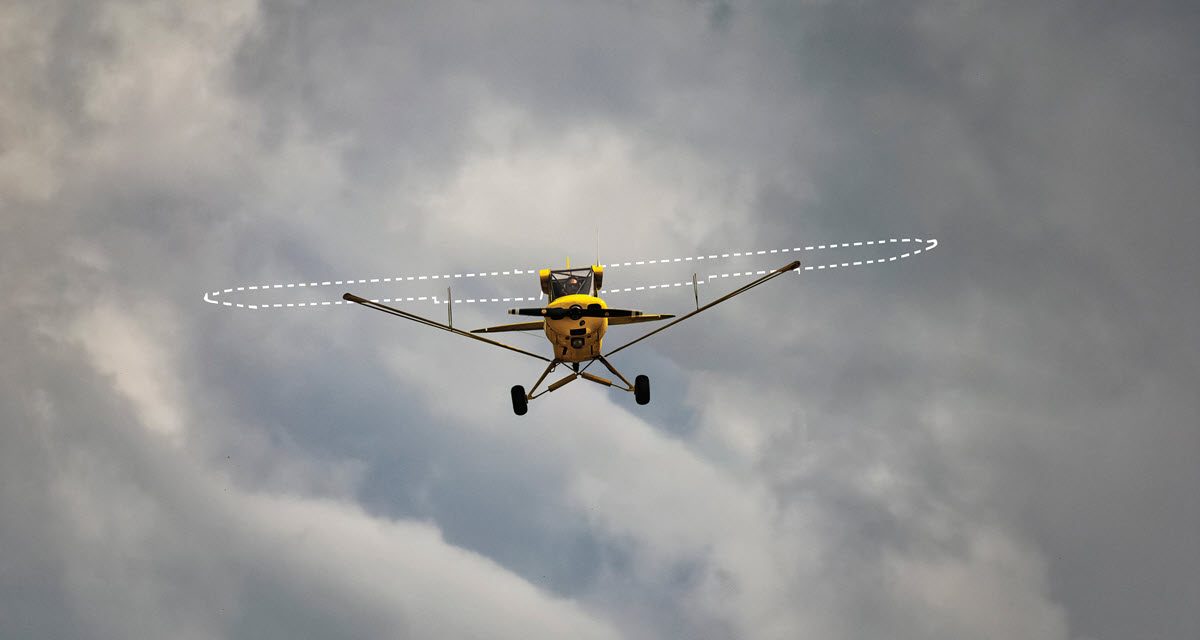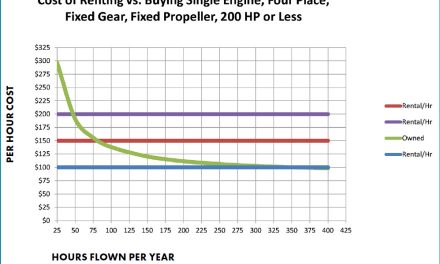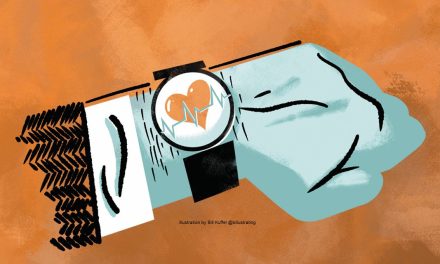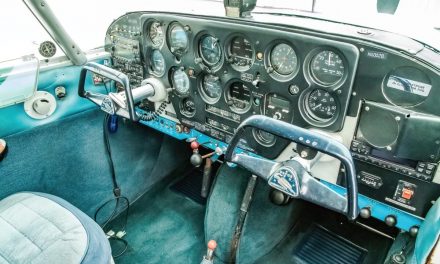I guess I could have titled this article “Flying Naked,” which means flying without insurance, but the word “naked” might conjure up the wrong notion to those who aren’t familiar with the phrase. So I stuck with the less provocative title.
A Review
Before we get into the specifics of flying without insurance, let’s do a little review. My last article was about the basics of aviation insurance. As a reminder, I discussed the liability portion and the different levels of hull coverage you can buy. I also mentioned that unlike auto insurance, there’s no nationwide requirement for minimum insurance. Only 12 states require some sort of financial responsibility (bonds, cash, insurance, etc.). This means that unless you have a bank loan with insurance requirements or an airport with requirements, you might not need to buy any insurance.
You could intentionally be flying naked. In fact, I think there are probably a lot more people flying uninsured than we think. Is that wrong? It’s up to the individual. Everyone has their own level of risk and what they can afford, legally and financially. Personally, I want some sort of insurance protecting my house, cars, and aircraft, but I have many customers who don’t think they need insurance.
I’ve heard it all. Some feel that if they crash, they won’t be around anyway. Others say they don’t have anything to lose but the aircraft. And others think they’re never going to crash. That last one is too crazy for me. If you look at the FAA’s Preliminary Accident and Incident Reports released every weekday, you’ll notice that there are quite a few reported incidents and accidents every single day. And that’s only the reported ones. We hear of other things that happen that never make it to the FAA. Maybe you won’t have an accident or incident, but should you take the risk?
Two Versions of Flying Naked
Technically, I think there are two different ways to fly uninsured. The first is that you buy liability insurance (third-party property damage and bodily injury), but you don’t buy any coverage for the aircraft itself (the hull value). That’s, in a way, flying uninsured because any damage to the airplane itself is all on you. If you ding the rudder backing it into the hangar, or your plane is destroyed in a tornado, it’s your loss.
The second way is not buying any coverage at all. If you hurt a person or passenger, or damage someone else’s property, it’s coming out of your pocket. And again, if your aircraft is damaged or destroyed, it’s your responsibility.
Insured But Not Covered
Can you be insured, but have no coverage? Yes, you can. An insurance policy is a contract between you and the insurance company. There are requirements spelled out in the policy that you must follow for the insurance company to pay out for a loss. If you don’t adhere to those requirements, the insurance company might not be required to pay you anything for a claim.
Recently, we have seen a few insureds and potential insureds putting themselves in a position where they might not be covered even though they have an insurance policy. One thing that seems to be happening is that a new buyer purchases an aircraft before looking into insurance. Insurance isn’t a guarantee for anyone who wants to buy an aircraft. Aviation insurance is based on actuarial data concerning the pilot and plane, and that data dictates how each situation is quoted.
The FAA or the Underwriter
FAA requirements aren’t the same as underwriting requirements. Typically, the FAA has lower requirements than the underwriters. If you crash your plane, the FAA doesn’t have any financial responsibility to you or the people you injure. But the insurance company may have to pay out thousands or even millions of dollars in a loss. Therefore, it will likely have stricter requirements than the FAA.
Let’s take a look at FAA 14 CFR part 61 (Certification: Pilots, Flight Instructors, and Ground Instructors), which prescribes the hourly requirements for the issuance of pilot certificates and ratings.
“A person applying for a private pilot certificate in airplanes, helicopters, and gyro-planes must log at least 40 hours of flight time, of which at least 20 hours are flight training from an authorized instructor and 10 hours of solo flight training in the appropriate areas of operation; three hours of cross country; three hours at night; three hours of instrument time; and other requirements specific to the category and class rating sought.”
Those aren’t necessarily the same stipulations the underwriter will require. Being a private pilot according to the FAA doesn’t mean you will meet the minimum requirements of the underwriter. The insurance company’s requirements may be higher.
Look Before You Leap
Recently, we had a private pilot with 75 hours who wanted to buy a high-performance retractable-gear aircraft. The underwriters declined to quote based on the pilot’s lack of “total logged hours.” They want the pilot to have at least 200 hours of total flying time before they consider quoting for an advanced complex aircraft. Fortunately, in this case, the buyer hadn’t put a deposit on the plane, so there was no issue with the aircraft purchase.
In another situation, however, the buyer put a nonrefundable deposit on a plane. The buyer was a student pilot and had bought an experimental aircraft. This time, we were unable to find a company willing to put a student pilot in that experimental aircraft, even though it’s one of the most popular aircraft on the market. This buyer will either have to fly it uninsured or park it and finish the license in a standard category aircraft before buying insurance.
The problem of low total time can hamper an insurance search. Most underwriters want a minimum of 125 to 150 logged hours before a pilot transitions to an experimental aircraft. In the past, we have insured student pilots in expensive complex high-performance aircraft (such as a Cessna 210 and Piper Saratoga), but in the last few years, it has become very difficult.
Flight Training and More
As I mentioned before, depending on your state, your airport, and if you paid cash for the plane (which means you don’t have a bank loan), you can fly uninsured. If you do, however, you might run into issues finding a flight instructor who wants to train in that situation. The Certified Flight Instructor will probably be the highest qualified pilot during the training. In the event of an accident or loss, the CFI is probably going to bear some, or all, of the responsibility and liability. Better check with your CFI, and of course, your legal advisers first.
There are other situations that put you in an uninsured position. Many people, including me, believe that training in a tailwheel aircraft is beneficial for pilots. It helps teach a pilot about rudder control, wind, cockpit visibility, and more. It reminds pilots that they need to fly the plane all the way to the hangar or tiedown. Here are the FAA requirements for pilots to get a tailwheel endorsement:
“14 CFR § 61.31 – Type rating requirements, additional training, and authorization requirements.”
(i) Additional training required for operating tailwheel airplanes.
(1) Except as provided in paragraph (i)(2) of this section, no person may act as pilot in command of a tailwheel airplane unless that person has received and logged flight training from an authorized instructor in a tailwheel airplane and received an endorsement in the person’s logbook from an authorized instructor who found the person proficient in the operation of a tailwheel airplane….”
There are a few minimum things you must be proficient in, but basically, if you meet these requirements, the FAA deems you qualified to fly a tailwheel aircraft. Note that it doesn’t specify which tailwheel airplane. Again, the FAA requirements are lower than the typical insurance policy.
I bring this up because recently we had a private pilot with a few hundred hours who bought a Cessna 170 tailwheel. The insurance required that the new owner needed a minimum of 10 hours of dual prior to solo and five solo before carrying passengers. The buyer had just received the tailwheel endorsement and felt confident to fly the new plane. The plan was to take a friend with him on a commercial airline flight across the country and fly the 170 home. Remember, the insurance requires a minimum number of hours dual and solo. If the buyer flew the plane home without meeting the training requirements, the policy would essentially be voided. Just because the FAA said he was ready didn’t mean the insurance company agreed.
A couple of other things to consider: If you let someone else fly your aircraft and they aren’t named on the policy or they don’t meet the open pilot warranty as spelled out in the policy, you’re flying naked. If you don’t get the training required by the policy, you’re flying naked. If you use the aircraft in a way not approved in the policy (such as for skydiving, pilot training, etc.), again, you’re flying naked.
If you don’t want to fly naked, get insurance coverage. When you do, make sure you understand what your policy requires. If you aren’t sure, call your broker and ask.
THINGS TO CONSIDER BEFORE FLYING NAKED
- Are you FAA-qualified for the aircraft you have insured (tailwheel endorsement, high performance, complex, etc.)?
- Does your policy have any specific training requirements (dual, annual school, IPC, etc.)?
- Do you let friends fly your aircraft? If so, do they meet “open pilot warranty” requirements? How do you know? If they say they do, but they really don’t, you’re at risk.
- Do you have the correct coverage for your specific plane and the flights you make (use of the aircraft, location etc.)?
- Does your logbook match what you told the broker when you bound the insurance? Did you give the broker the correct hours, ratings, etc.?






